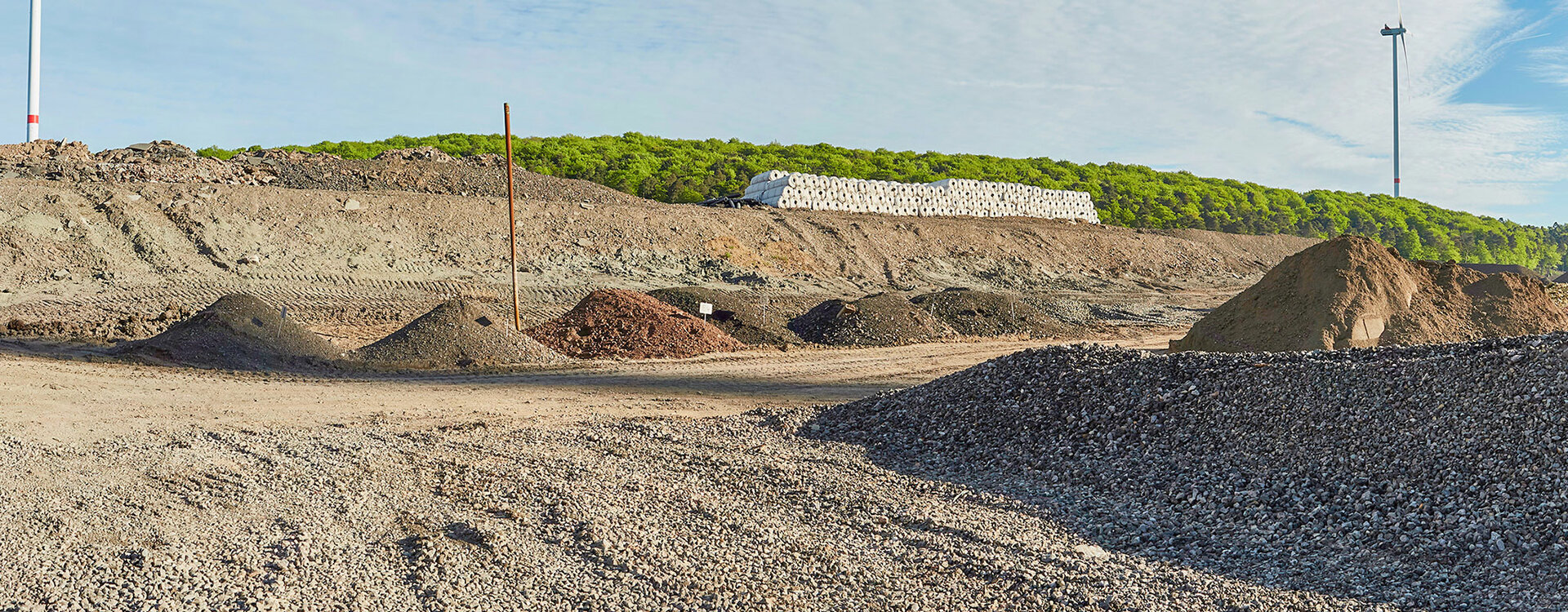Search
Company locations
The whole picture – with just a single click. Find out here where our branches are located, what services they offer and how to contact them.
REMONDIS Group locations
Discover the world of REMONDIS with its approx. 900 branches and associated companies in over 30 countries across Europe, Africa, Asia and Australia.
Secondary construction materials for Kapiteltal landfill
The use of waste for direct use as or for the production of secondary landfill construction material is carried out in accordance with Annex 3 of the Landfill Directive. This means that the material must comply with the assignment values specified there. Over the entire period of the Kapiteltal construction project from 2015 to 2023, approx. 2.2 million tonnes of substitute building materials in form of secondary aggregates will be used in the landfill. The landfill construction materials used must meet defined characteristics. The quantitative breakdown by material and corresponding material properties are explained in more detail below.
Required material volumes for the landfill construction
Listed below are the volumes of landfill substitute construction materials by type of material required to expand the Kapiteltal landfill.
| Landfill construction materials for the entire project | ||
|---|---|---|
| Flank fill | Material identification C | 1,360,000 t |
| Gas drainage layer | Material identification D | 90,000 t |
| Dehydration protection layer | Material identification E | 42,000 t |
| Protective layer for drainage layer | Material identification J | 440,000 t |
| Drainage layer | Material identification L | 176,000 t |
| Profiling of old landfill | Material identification AB | 70,000 t |
Landfill construction materials by application area
As part of the implementation of the Kapiteltal landfill expansion project, the materials to be used for landfill construction are precisely defined. The illustrations depict the functional layers of the landfill and the associated material identification.

The landfill construction materials and relevant parameters

Gas drainage layer with material identification D
- Non-cohesive road rubble
- Grain sizes 0/32 up to 0/56
- Oversize particles up to 64 mm ≤ 10%
- Lime content < 30%
- Long-term permeability on average kf ≥ 1 x 10-5 m/s

Dehydration protection layer with material identification E
- Soil classes SU* and GU* according to DIN 18196
- Maximum grain size 32 mm, oversized particles up to 64 mm max. 10%
- Permeability kf ≤ 1 x 10-6 m/s

Drainage layer with material identification L
- Grain size 16/32 or up to 08/56 or comparable grain sizes with proven suitability
- Washed gravel (round) or twice crushed aggregates
- Permeability kf ≥ 1 x 10-2 m/s after placement
- Grain size distribution according to BQS 3-1 or comparable
- Grain fragmentation rate under dynamic and static influence GDA E3-12

Protective layer drainage
- Lower layer with material identification J3
- Mixed-grain material of soil classes SU, SU*, GU, GU* according to DIN 18196
- Fines content max. 40%
- Maximum grain size 100 mm, oversized particles up to 200 mm max. 10%
- Minimum thickness J3 + J4 > 1.0 m (placement in two layers)
- Minimum thickness J3 > 0.5 m

Protective layer drainage
- Upper layer with material identification J4
- Maximum grain size 0.3 m3
- Graded material





